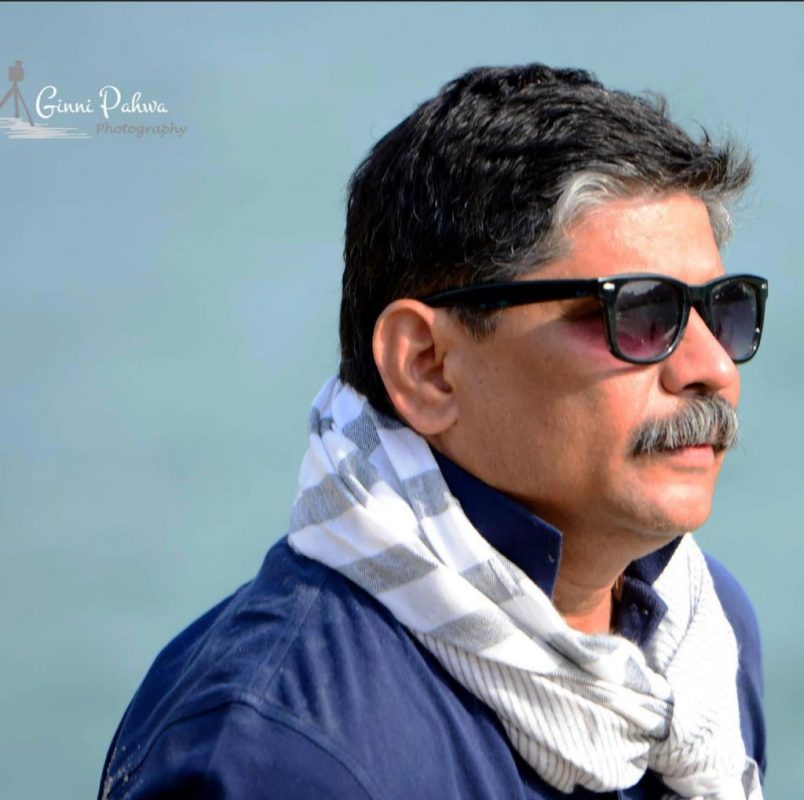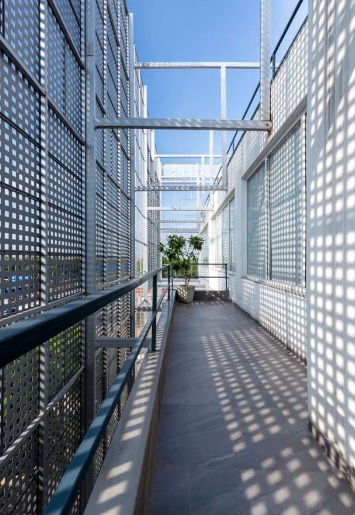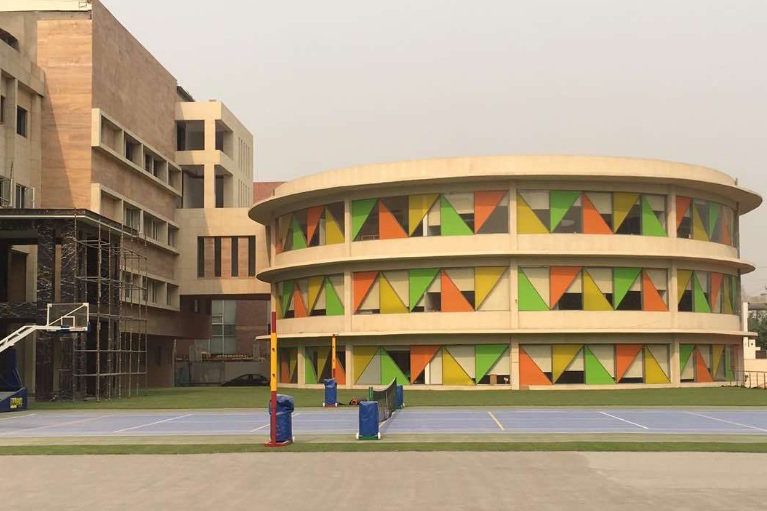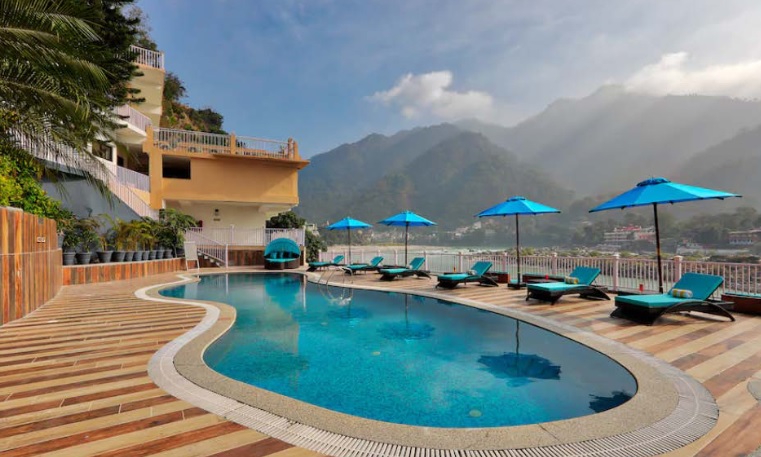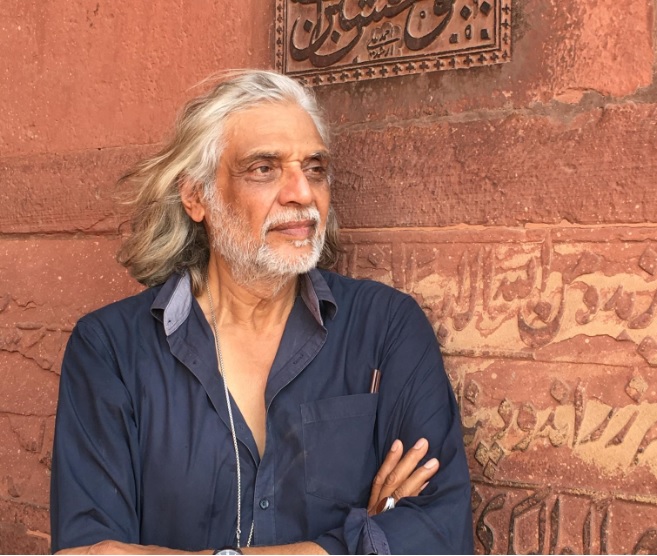In our next session of Samvaad, Abir Pothi sits down with well-known architect, urban planner and designer Vivek Gupta, and delves into his ‘build to suit’ design philosophy, besides discussing how he personally connects with art
With over 30 years of experience, architect Vivek Gupta, the founder and managing director of the New Delhi-based architecture and design firm Arvind Vivek and Associates (AVA), is quite the behemoth in his field. His stature is as larger than life as the range and veritable scope of many of his sprawling projects in urban planning, architecture, and interiors, be it in the spheres of commercial, residential, retail, wellness and corporate spaces.
The geographical footprint of these projects extends not just across India but also to Dubai, Turkey, Bulgaria, Kuwait, Germany, and Singapore. The studio has, along its prodigious path, garnered prestigious design competition and various professional body awards.
As a huge proponent of sustainable architecture, the firm, led by Gupta, believes in the ‘Build To Suit’ design philosophy — wherein each project’s vision is unique to not just the requirements of the user, but also the climate it is built in, and the context for which it is built, leading to a distinct character for each building/interior.
There is a certain artistry to this nuanced balance of material innovation, climatic responsiveness and a design approach, each discrete to the individual project but evolving collectively — and Gupta is not just a firm believer in the optimum enriched spatial experience, but also someone who deeply understands that art is innately embedded in any form of design. Excerpts from his interaction with Abir Pothi’s Ruby Jagrut, as they sit in Samvaad:
If one starts reading out the profile of architect Vivek Gupta, they would run out of time for any interaction! The legendary architect has done some amazing projects pan-India and also outside the country. The objective behind this session of Samvaad is to get to know Gupta as a friend, architect and lover of art — exploring his relationship with the latter in particular. What is Vivek Gupta’s philosophy, his design philosophy, his design vision, his perception and manifestation of design, and how do his projects transcend from paper to reality and become these huge, tall and beautiful buildings? What is it to be an architect?
Thank you for asking me that! Architecture is life for me. It is a manifestation of just about everything creative. It is very oft said that after god, who created everything, it is architects who get the opportunity to create something that remains for longer than their own life. Anything we do tends to outlast us, like the buildings we make. Architecture is one of the most fulfilling professions, wherein you can create something with all emotion imbued for people of society, and that creativity will make an impact — an emotional, spatial, physical impact — on the surroundings of people. This is essentially what an architect does and what architecture is about. It is about creating memories for people.
If you think about all your childhood memories, there would always be a built volume around you — even if there is a reference point, like a house close to yours, or a home you lived in involving memories with a terrace or balcony or courtyard… there is always a physicality of a built form around in memory.
I have always seen architecture as a marriage between art design and functionality. How do you strike the right balance between them? There must be some process, as your projects are huge, magnificent in scale, but still beautiful. How do you manage this?
Somewhere, architects hail from mathematics or physics backgrounds. Not saying this as a mandate, but the reason is that when they study mathematics or physics, somewhere in their subconscious there is rationale. Although one may argue that an artist or creative person or sculptor can be a better architect, in the sense that the form they create can be more beautiful. So Antoni Gaudí was not an architect — he was a master craftsman and a creative person. And, look at the kind of buildings he has created! These kinds of creations are very organic, but you could debate that there is not much logic in the buildings he made, although it is beautiful architecture.
So, what is an architect when they have studied science? They are able to put rationale behind creativity. Functionality becomes the most important thing in my architecture, or the kind most architects do. There is a spatial programming based on requirement, like when a residential space divvies up into the bedroom-living room-toilet-kitchen, or it is different with an office building or museum of public building. Functionality is always a guiding factor behind design making, and that is obviously always the foremost thing.
The second aspect is design — to resolve this functionality into meaningful design, which has its own interpretation. Because you have a style and want to weave it together, that manifestation takes on a certain narrative and that becomes your own design style.
We should come to art in architecture slightly later in this conversation, perhaps, as art is central to all life, not just architecture. Even for public spaces, the most important thing is art. Right from cities to town squares, public places always used to have art, like say, a sculpture. I call this place-making — something that makes people understand the functionality of a place. A sculpture or piece of art gives people an orientation of an entire space. Sochon ek bahut bada maidan hai, uske beech mein ek sculpture lagaya hai… say one of Maharana Pratap, right in the middle. Suddenly, it gives an orientation to the entire space. Now, that vast open space has a front, left, right and rear. And that is how you start articulating that space.
Having said that, this is just the physical aspect. There is also the emotional aspect, wherein the place-making you do becomes the most important thing to define a given public space.
There are public spaces at large in a city that come about because of infrastructural development, because of being engulfed by buildings on all sides, and they remain as open public spaces. The articulation of these public spaces via art is what I have been advocating for, for the longest time. I am talking about spots like the underbellies of flyovers — why can’t they be made beautiful? Why can’t we use them beautifully? Why can’t they become public gathering spaces? Why can’t you have art or sculptures here? Why can’t they become green spaces?
Art brings in peace, serenity and contentment into life. How is it different when you do it in a big city from a smaller city? Your surroundings have a role to play, so how do you weave new urban architecture into the existence of an old town? What kind of balance would you like to strike? How do you intervene without imposing — and instead become a part of the ecosystem, without being too powerful? To become one with the environment — how do you manage that with architecture of your stature, like huge five-star luxury hotels and the like in a small city or town, which may have its own history and beauty?
When I create my architecture, its whole context changes in each different location. Say in Delhi, there is a context of urbanity, visual surroundings, history and climate — but when I go to Lucknow or Leh or Sikkim or Chennai or Bangalore or Mumbai or outside the country, the context once again becomes very important. The kind of project can be institutional as well. We work with a lot of such clients, too. The second most important context is where creating. If it is in Leh-Ladakh, the climatic zone one is creating in is cold — the building has to respond to it. This is also one of the reasons I say architects need to study science, to be able to see the rationale behind creating a building.
Nobody will stop you from creating Disney Worlds all over the planet. This Disney World is an artistic thing, not architectural. It is to create those icons or that make-believe world, and is replicated everywhere. Or, take the The Venetian in Las Vegas — people want this make-believe. But when you actually create buildings about the context of the place they are in, you need the architecture to resonate with the climate as well.
I maintain that art is global, architecture is not. It is an important thing. Art is global in that you can place it anywhere — it is a universal language. But architecture needs to be contextual and climatically so, too.
So when you say contextual and working in harmony with the surroundings of any region, like for instance Leh-Ladakh or other cities, do you adopt the culture or craft of the local area where you are working? If yes, how do you incorporate it into the project and how does it reflect in the design?
Yes, of course I do. This happens at the macro level and the micro level. At the macro level, it is about building techniques. For instance, in Ladakh, there are certain givens. The indigenous architecture of Ladakh teaches you how to build intelligently, because before you invented anything, the people who had been living there knew how to build to suit the climatic conditions they were building in. So, there are certain elements of architecture that come in at the local level. There are also crafted elements of this architecture, like the wooden shade over the buildings, since the region has a dry climate that can also get pretty hot. The learning of techniques of building come from local people, and in that way, it is an indigenous manner of building.
Taking into account the micro level, we bring in the detailing, like say in the windows, or how you want to create a Ladakhi type of architecture. How do you use local craftsmen to give nuances to architecture so that people start relating to these buildings? These are small steps. In a building, using local craft, art and building techniques together is a sensible thing to do.
Architecture is an experience, and until and unless it involves the nuances of daily life, where there is craft art and sensitivity, it won’t do.
I am not the best person to talk about art, especially with an artist and sensitive person like you, who us curating thousands of artists across the country. But looking at your passion and what you are trying to do for these kids, many of whom don’t even know their own capability — you are able to curate them and get them worth, and this kind of help is amazing.
Let’s say you are in a place where there is a lot of artwork on display. Now, if you had to buy a painting for yourself, which kind of painting would you go to and say this works for me? How do you decide whether you like or dislike a painting?
I do not dissociate art from a space. For me, it is all contextual. It will be for that space — I ask what is the volume of the space, what is the size of the painting, what does it depict, what emotion does it have, what is the sensitivity, what is the textural feel, and where am I going to place it. The whole thing comes into the picture, and then that is where I would choose, depending on whether I am celebrating a space, or it is a space where I want to feel humble, or something I want to monumentalize. It depends on the space and the kind of emotion it has — and I will choose the art accordingly. But again, I am always open to seeking approval for at least the kind of artwork I put. So, to answer your question correctly — it will have to respond to the emotion and scale of the space, and what the space is conveying.
You say art has the power to convey emotion, gathering from your last answer — whether it conveys humility or power. That means you do communicate with art, and that is what art is all about — how it engages with you, what emotions it evokes in you, how powerful or helpless or happy it makes you feel. Art has its own vocabulary and its own sense of conversing with a viewer, wherein every person can come up with a different answer, because we see our reality with our own perception, experience and understanding of life. It is very individual, and the liking and disliking of art can be very personal. You have been designing a lot of five-star hotels and big projects. There is always art being displayed in every possible nook or corner of these spaces. What is your relationship with art and contemporary art in particular? How do you see Indian contemporary art and where it is going, and what would you like to say to young budding artists?
I am such a “now” person. Every New Year, I send a greeting out saying “Happy Now Year!” I believe in the now and the present moment, so in that sense, everything is contemporary to me. What exists today is contemporary. I honestly don’t differentiate between contemporary and vernacular or anything in terms of art, because art is timeless to me. That is my understanding of it.
If you are talking about artists who are contemporary, I will leave that part of my understanding of art to experts like you, with complete faith and belief. This is why friends like you help one understand art, a subject you don’t otherwise comprehend.
You can collaborate on skills, but for art, I do not collaborate — I just give up and take a backseat and let experts like you, who know your subject, take over. Every artist can have a limitation, whether in style or flair or whatever, but it is only after working with you that I have realized that there is an entire repertoire of art, sculpture and even kind of artist I can work with. And the beauty of it all is that it is selfless. There is not only a sense of getting to learn something and getting something curated from an expert, but also knowing that it is earning the goodwill of so many unknown artists sitting in all parts of the country who are ‘gumnaam’ otherwise. So, Abir and Ruby are giving those faceless people a canvas to put up at some of the finest places designed by the finest people. You are the cause for celebration! I know that the uplifting work you are doing for all those people is your goodwill and you\’re doing it selflessly. And I am happy to say that my heart goes out to you for what you’re doing. All our conversation often veers around what is happening to young artists, who may not have work, and you trying to reach out to them. For this, hats off to you and respect from the bottom of my heart.
Thank you for your kind words, but this comes naturally to us…
I can see that. When I reached out to your saying a friend needs help getting a sculpture, you gave me so many options that we were left struggling to decide! We were fortunate to learn that before we do something in terms of acquiring art, like a sculpture, we need to know a thousand things related to material, size, budget, transport and more. All the more I say — lead me to an expert, give up the headache and bask in the reflected glory! And I am sure we will be basking in this glory of good artwork you create for us. That is what collaboration is all about, when you give your 100 per cent to somebody.
I prefer not to use the word help — even you are allowing me to enrich my knowledge and experience with art. I learn from every artist associating with Abir, and in a way, I am imbibing from young, emerging artists. It is very fulfilling to work side by side with them. We are in it together as partners and we give each other a lot of tangible and intangible things in this interaction, so I will refrain from using the word help…
Agreed. It is a beautiful collaboration with so much of exchange of ideas. I am sure you are enriching their lives and they are enriching yours.


